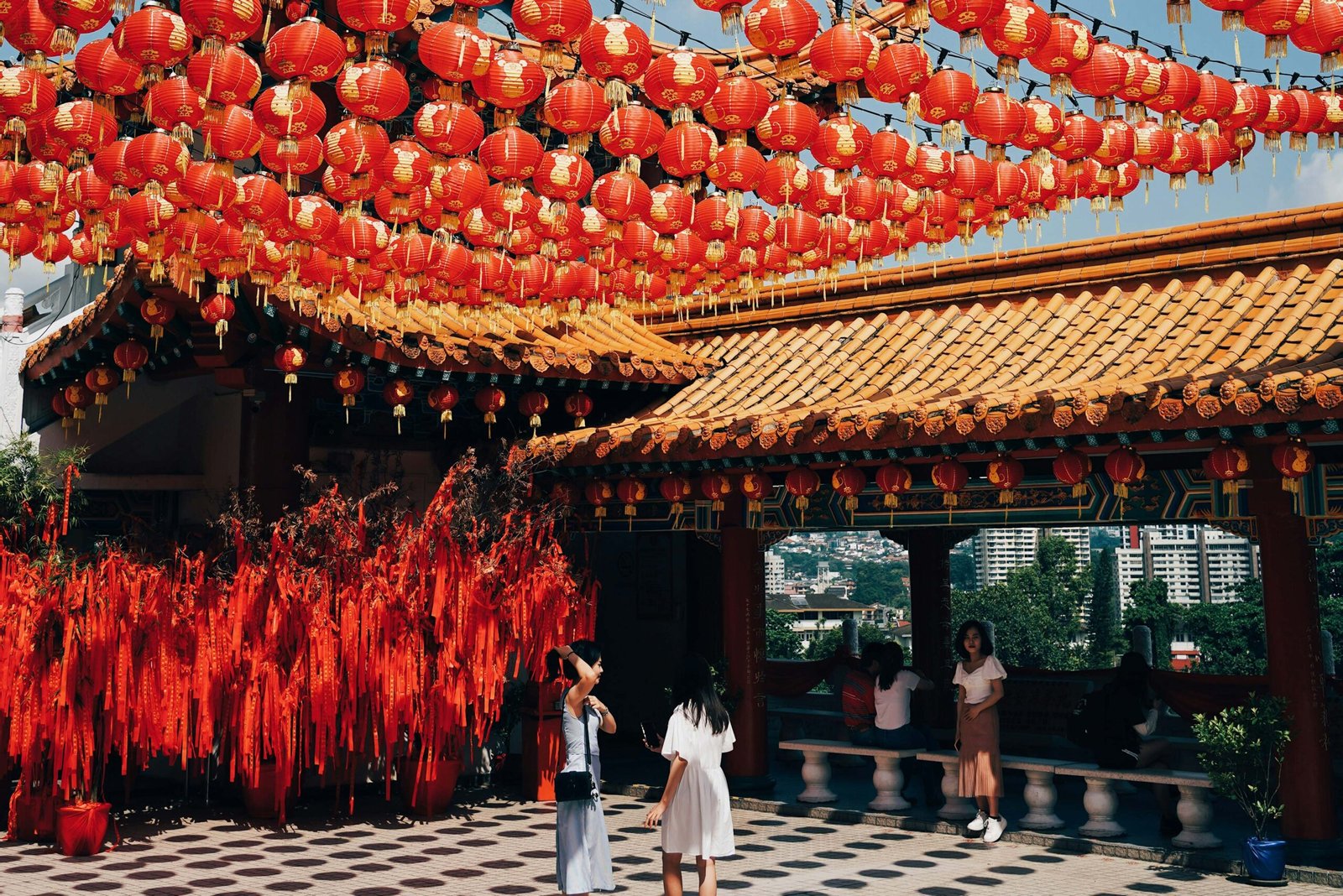
Celebrating East Asia: A Year of Festivals, Traditions, and Flavors
Discover the maior holidays celebrated in the East Asia, their signifcance, traditional celebrations, and iconic foods.
1. Chinese New Year / Spring Festival (Date varies, January or February)
– Significance: Celebrates the beginning of the lunar new year and the arrival of spring.
– Celebration: Family reunions, red decorations, lion dances, fireworks, and giving red envelopes (hongbao).
– Food: Dumplings, fish (for prosperity), niangao (sticky rice cake), and spring rolls.
2. Lantern Festival (15th day of the Lunar New Year)
– Significance: Marks the end of the Chinese New Year celebrations.
– Celebration: Lighting and viewing lanterns, solving riddles written on lanterns, and parades.
– Food: Tangyuan (sweet glutinous rice balls).
3. Qingming Festival (April 4-6)
– Significance: A day to honor ancestors and sweep their graves.
– Celebration: Visiting graves, offering food, and burning incense or joss paper.
– Food: Qingtuan (green dumplings made with glutinous rice and mugwort).
4. Dragon Boat Festival (5th day of the 5th lunar month, usually in June)
– Significance: Commemorates the poet Qu Yuan and promotes health and safety.
– Celebration: Dragon boat races, hanging medicinal herbs, and wearing perfumed pouches.
– Food: Zongzi (sticky rice dumplings wrapped in bamboo leaves).
5. Mid-Autumn Festival (15th day of the 8th lunar month, usually in September)
– Significance: Celebrates the harvest and the full moon, symbolizing family unity.
– Celebration: Moon gazing, lantern displays, and family gatherings.
– Food: Mooncakes (filled with lotus paste, red bean, or salted egg yolk).
6. Chuseok (Korean Thanksgiving, 15th day of the 8th lunar month)
– Significance: A harvest festival to honor ancestors and give thanks.
– Celebration: Family gatherings, ancestral rites (charye), and folk games.
– Food: Songpyeon (half-moon-shaped rice cakes), jeon (savory pancakes), and bulgogi (marinated beef).
7. Seollal (Korean Lunar New Year, date varies)
– Significance: Celebrates the lunar new year and honors ancestors.
– Celebration: Wearing hanbok (traditional clothing), performing sebae (bow to elders), and playing traditional games.
– Food: Tteokguk (rice cake soup), jeon, and japchae (stir-fried glass noodles).
8. Children’s Day (May 5, Japan and South Korea)
– Significance: Celebrates children’s happiness and well-being.
– Celebration: Family outings, flying koinobori (carp-shaped windsocks in Japan), and giving gifts.
– Food: Chimaki (sweet rice dumplings in Japan) and traditional snacks.
9. Tanabata (July 7, Japan)
– Significance: Celebrates the meeting of the deities Orihime and Hikoboshi, based on a Chinese legend.
– Celebration: Writing wishes on tanzaku (paper strips) and hanging them on bamboo trees.
– Food: Somen (cold noodles) and colorful desserts.
10. Obon Festival (Mid-August, Japan)
– Significance: Honors the spirits of ancestors.
– Celebration: Bon odori (traditional dances), lighting lanterns, and visiting graves.
– Food: Ohagi (sweet rice balls) and somen.
11. National Day (October 1, China)
– Significance: Celebrates the founding of the People’s Republic of China.
– Celebration: Parades, fireworks, and cultural performances.
– Food: Roast duck, dumplings, and other festive dishes.
12. Tsukimi (Mid-Autumn, Japan)
– Significance: Celebrates the autumn moon and the harvest.
– Celebration: Moon viewing, decorating with pampas grass, and offering food to the moon.
– Food: Tsukimi dango (rice dumplings) and seasonal produce like chestnuts and sweet potatoes.
13. Dongzhi Festival (Winter Solstice, around December 21-23)
– Significance: Celebrates the winter solstice and the return of longer daylight hours.
– Celebration: Family gatherings and honoring ancestors.
– Food: Tangyuan (China), patjuk (red bean porridge in Korea), and kabocha squash dishes.
